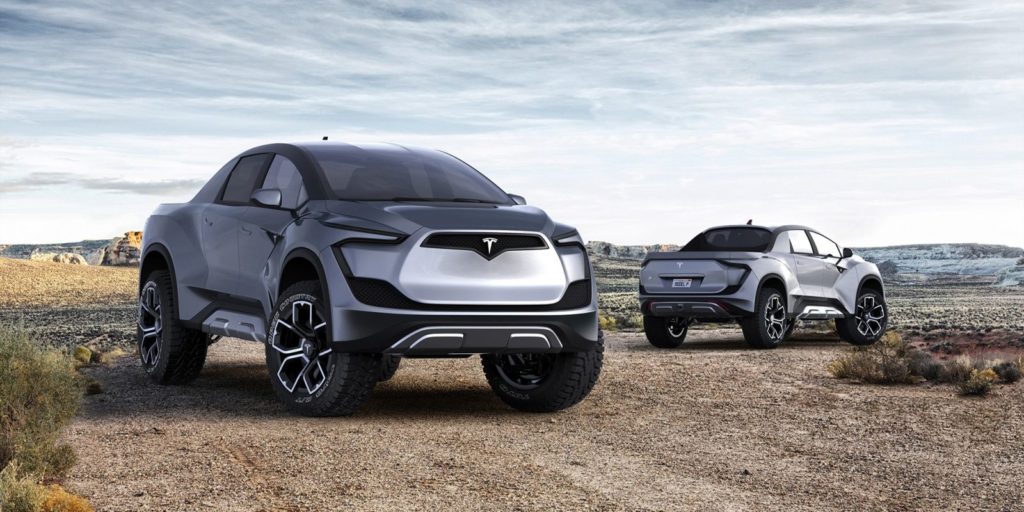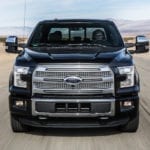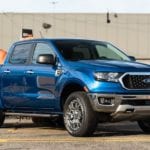What can you say about the truck segment, as a whole, that hasn’t been said before? Well, for the first time in a long time, there seems to be plenty to say – or at least, plenty to talk about. Enough with recounting the century-plus role of the pickup in our collective cultural mindset. No more rehashing of the ever-continuing battle between the Detroit Three, or Ford’s all-prevailing lead. Hell, we’re even moving away from making fun of the Honda Ridgeline…okay, maybe that last one was a lie, but you get the point.
For a long time, it’s felt like the entire segment has had little to offer but variations of the same conversations. Jacked up performance numbers, weight reduction, diesel powertrains and the inclusion of tech and luxury-inspired amenities. I mean, it’s really no surprise that everyone got so pumped up about GMC’s Multi-Pro tailgate. In the absence of real news, people will settle for just about anything.
But the game is changing. We talk a lot about both electrification and autonomy here on AutoInfluence, and rightfully so, it’s what’s driving the vast majority of innovation within the industry. And, for the purpose of this conversation, it’s the former that seems to be shaking things up a bit. In fact, most every major automaker has laid out an aggressive timeline for nearly full electrification of their respective lineups over the next decade.
And while there are still plenty of naysayers (or, at least, unconvinced consumers) struggling to wrap their heads around electrified performance, it’s hard not to be impressed with what automakers have been able to achieve.
With apologies for the brief detour from our ‘truck talk’, let’s look at what lies at the heart of their skepticism – namely range and performance. With an 89-mile range, sedan options like the Honda Clarity seems hardly plausible outside of low-mileage, non-commuting lifestyles. Such lackluster numbers emphasize the potential inconvenience of EV’s, making them less appealing to the wider consumer base. The Kia Soul comes in only slightly better at 111 miles, while the Nissan Leaf (at 150 miles) is reasonable, at best. And while it was primarily the aspirational brands that were putting out higher ranges, the Leaf Plus delivers a line-topping 226 miles and the Niro provides a strong 239 mile range for Kia. That positions the Niro above Audi’s E-Tron (at 204 miles) as well as being above BMW’s i3 (at 153 miles). And of course, Tesla’s Model 3 serves up a genuinely impressive 310 mile range, with a promise of higher numbers to come. Sure, electrified range speaks to sustainability, but with impressive numbers being offered up by automakers of all price tiers, they also highlight the importance of reliability.
In a recent poll, it was determined that only 5.8% of (full-size) truck owners consider performance numbers to be the primary influence in their buying decision. 31.3% conveyed reliability as being the overruling factor. And while there are no real surprises there, it certainly helps to identify one of the bars set for electrified trucks: the assurance of reliability. To compete with the likes of the F-150, Silverado, RAM 1500, or even the Tundra and Titan, a truck has to be able to get the job done while delivering a low-maintenance experience. Range is a major part of that, and low-range offerings will be an immediate turnoff for commercial users, commuters and mid-western truck buyers. But what about performance?
In recent weeks, Ford released a video showing their EV F-150 prototype pulling 10 double-decker rail cars, loaded with 42 current model year F-150s. Pulling the equivalent of 1.25 million pounds was an impressive stunt, for sure, and a promising tease of how Ford might pacify EV detractors. With a hybrid version planned for 2020, and the EV version tentatively slated for release by 2023, no performance specs for the concept have been released – but it’s a promising first step in proving that an EV F-150 can still be ‘Built Ford Tough’.
That said, if Ford’s getting ready to pull the trigger – you can bet that GM and FCA aren’t too far behind (even if they’re not showing their cards). In other words, we can expect an onslaught of EV pickups within the next decade, each one aiming to prove its own mettle.
But what about Tesla? In late July, elon Musk teased a possible unveiling within 3 months on Twitter. And while description of Musk Tweets range from ‘on the nose’ to ‘aggressive trolling’ there have been some really interesting tidbits. For example, he curiously compared its (anticipated) performance numbers to that of the Porsche 911 implying a 4 second sprint to 60mph. And at the Annual Shareholders Meeting, he even went on record to say, “If the F-150 can tow it, the Tesla truck can do it”. So Tesla, heir apparent to the EV Range Crown is also promising a truck that can keep pace with Ford capability, and Porsche speed? You have our curiosity, Mr. Musk. And with your supposed promise of a starting price-tag “well-under $50,000” you also have our attention.
Of course none of this is carved in stone, until Ford, Tesla (and any other truck maker) steps up with a formal reveal and timeline for actual production. But no matter how you look at it, the next few years are bound to be some of the most game-changing in the modern-history of trucks. Arguably, the pickups of 2030 might be as far away from the pickups of 2020, as those from 2020 are from 1920. Both mechanically, and in terms of design, things are changing and changing fast…and we’re just as interested as you are to see where we find ourselves a decade from now (and beyond). Let’s just hope they don’t ‘truck’ things up.
What do you think about electrified truck offerings to come? We want to know.




